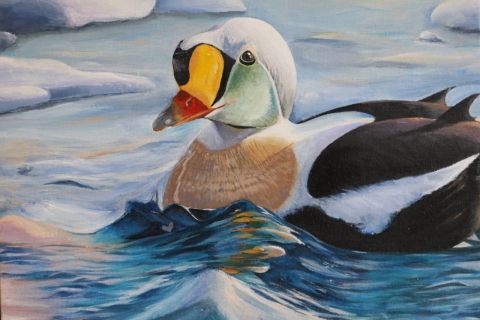Growing up I always doodled. I scribbled on everything and everything I could get my hands on (even things I shouldn’t, like my bedroom walls). It was how I was able to express myself and share the world through my eyes.
As I moved from crayons and organic shapes, I began to find a deep passion for drawing. This was in middle school when I was able to choose an elective of either art or band. EVERY ONE of my older siblings had learned to play music, but I wanted to take art. And so, while my siblings didn’t think it was fair, I was afforded the space to pursue my interest.
From that age, I found that while other art forms were fun, drawing was where I felt most connected to the art I created. I started entering contests and transcribing what I observed around me to paper.
I went to college wanting to teach art and math, with my true desire to teach art. I left college with degrees in Graphic Design and Marketing however, as my interest during that time shifted to be more focused on the business side of the art world. It was my desire at that point to work for an “outdoor company” as a creative. What I didn’t understand at the time was that the U.S. Fish and Wildlife Service was a place where I could work for an organization focused on the outdoors where my passions and skills in communicating through the arts also had a home.
As a Park Ranger for the Ridgefield National Wildlife Refuge Complex, I serve a number of roles to help ensure visitors, volunteers, and partners engaging with the Refuge Complex feel welcome, supported, and their relationships with the outdoors are enhanced. For many, fulfilling this role is done by leading education field trips and volunteer restoration efforts. While I support opportunities for community engagement, where I really feel I shine is in the development of outreach materials, educational handouts, and visual designs to help the community better understand the Service, engage with the Refuge Complex, and nature in general.
Over the nine years I have worked for FWS, I have enhanced my own understanding of birds, phenology, and wildlife in general by drawing the species, watching when certain plants bloom and recording it, and photographing the refuges for various multi-media projects. Using the arts to connect me to nature has helped me to not be overwhelmed in trying to memorize every bird’s name, but to pay attention to characteristics of such. I can recall the names of birds when I have given my own name to them based on the colors of their feathers, just as Black-capped chickadees and Red-winged blackbirds are named. This gives me the ability to recall them based on my interest and what I can rapidly recall. One example of doing this is a male Northern Harrier looks like it is wearing a pair of white underwear to me, so that’s what I look for when trying to decipher if the bird of prey flying overhead is such or a Red-tailed Hawk (which honestly, I think it should be called a Rust-tailed Hawk instead to be accurate).
What we see and how we choose to interpret that in art, often is something we can leave to the artist. When drawing a male Wood duck (banner image), what colors are depicted will depend on the light I saw it under, the angle, and the contrast of the background or home it was observed in. While traveling in California, I sat with a fellow Park Ranger mesmerized by a Scrub Jay. We couldn’t place the name of the bird, but just thought it was stunning. The blue of the birds' head and body paired with the vivid orange rocks and drier soils of Joshua Tree National Park, just made the colors pop, much more so than when viewing a Scrub Jay back at the Refuge…
The Junior Duck Stamp Art Contest is a free contest for K-12 students in formal, Tribal or homeschools across the nation. It is held annually by each state and U.S. territory to provide a way for students to share what they have learned about wetlands and waterfowl at the culmination of the Junior Duck Stamp Program. See some submissions here.
The contest simply requires that any student submits their original artwork of a native North American duck, goose, or swan. While there are numerous species of waterfowl found across the country, it seems that often the most colorful species are chosen by students for their submissions.
For the second year in a row, Ridgefield NWR Complex is hosting the 2023 Washington State Junior Duck Stamp Art Contest. As the Washington Junior Duck Stamp Coordinator, I see this contest as a valuable and impactful way to connect more youth to nature, just as I did growing up. And a way to introduce students to STEAM careers that focus on art.
I wasn’t aware of the Junior Duck Stamp Art Contest when I was younger, and so while I didn’t participate in it, it is now a goal of mine to expand who knows about it, to hopefully garner more students to express their observations of waterfowl as a participant. Every entry earns a certificate of participation and a chance to compete for top honors in their age group. One “Best of Show” entry from all submissions will be entered in the National Competition, where the top entry overall will be produced as the Junior Duck Stamp and sold to support the program and conservation.
To learn more and find free developed educational curriculum based on the contest, visit: https://www.fws.gov/refuge/ridgefield/visit-us/activities/education-programs. The deadline to submit artwork and the accompanying required forms to the Ridgefield NWR Complex Admin Office in Ridgefield, WA is February 15, 2023.






